Analgesic gels offer a targeted approach to pain relief, delivering soothing effects directly to the affected area without the systemic side effects associated with oral medications. This study aimed to formulate and evaluate herbal analgesic gels utilizing natural ingredients known for their pain-relieving properties. Three formulations (F1, F2, F3) were developed, incorporating turmeric, ginger, menthol, and essential oils, each with varying ratios of excipients. The formulations were subjected to comprehensive evaluation, including stability testing, pH determination, irritancy testing, spreadability assessment, and phase separation analysis. Results indicated that all formulations exhibited stable semi-solid appearances with pleasant herbal aromas and passed irritancy tests, demonstrating skin compatibility. pH values fell within acceptable ranges, with slight variations among formulations. Satisfactory spreadability and absence of phase separation were observed across all formulations. While F3 had the highest pH, all formulations showed potential for effective and safe pain relief. Further optimization may enhance their efficacy for broader application in pain management.
Herbal Analgesic, Pain Relief, Ayurveda, Plant-Based.
An analgesic is a substance or medication used to relieve pain without causing unconsciousness. These substances work by either stopping pain signals or altering how the brain perceives pain. They are essential in treating various levels of pain, from minor aches to chronic conditions. Analgesics come in different types, such as non-opioid and opioid analgesics. Non-opioid pain relievers like NSAIDs and acetaminophen work by either blocking inflammation or altering how we sense pain. They're effective for mild to moderate pain and are generally safer than opioid medications, making them a top choice for many people looking to ease their discomfort [1].
On the other hand, opioid pain relievers work by targeting certain receptors in the central nervous system to relieve pain. Although they're very good at managing intense pain, using them can lead to tolerance, dependence, and side effects. However, despite these concerns, opioids are still necessary for treating severe pain, both short-term and long-term, that doesn't respond well to other types of pain relief [2].
Analgesics do more than just relieve pain symptoms; they have a wider-reaching effect on a person's overall health and happiness. By easing pain, these drugs help improve how well people can move, function, and enjoy life. They make it easier for individuals to do daily tasks comfortably, fostering both physical and emotional strength when dealing with pain-related obstacles [3].
Analgesics extend their benefits beyond mere pain relief, impacting a person's holistic well-being. By mitigating pain, these medications enhance mobility, functionality, and overall enjoyment of life. They facilitate smoother performance of daily activities, nurturing resilience both physically and emotionally amidst challenges associated with pain.
In summary, analgesics are essential for easing pain related to various conditions, ranging from mild to severe and chronic. With their varied ways of working and therapeutic characteristics, these drugs offer crucial relief, enabling individuals to manage life more comfortably and with increased strength and adaptability [4].
1.1 Pain Management:
Pain is like a warning signal your body sends when something is wrong, whether you're hurt, sick, or feeling really upset. It's an important part of how your body protects itself, letting your brain know that something needs attention. Your nerves help pass this message to your brain, triggering quick reflexes to keep you safe and prevent more harm [5].
1.2 Classification of Analgesic gel:
Pain comes in different forms, mainly acute and chronic. Acute pain hits suddenly and strongly, usually when you're hurt or sick. It's like a quick warning sign, telling you something's wrong and making you take action to protect yourself. Chronic pain, though, lasts longer than expected, even after the injury should've healed. Dealing
with it is tougher since it sticks around, often needing more complex ways to manage it and get relief [6].
Analgesic Gel:
Analgesic gels offer a practical and efficient way to manage pain and discomfort. These gels are meant to be applied directly to the painful area, providing targeted relief. By containing pain-relieving, anti-inflammatory, and soothing ingredients in a gel form, they offer comfort directly where it's needed while reducing the risk of side effects in the rest of the body. Whether it's for sudden injuries, ongoing conditions, or everyday pains, analgesic gels are handy and adaptable. They're easy to apply and work quickly, making them a popular choice for people who want fast relief without having to take pills. This introduction explores how these gels are made, how they work, and the potential ways they can improve overall well-being [6].
An analgesic gel is a specialized semi-solid emulsion blending water and oil, designed for easy application onto the skin. Crafted with precision, these gels aim to alleviate pain by harnessing the combined effects of different ingredients. They offer targeted relief, soothing specific areas of discomfort or inflammation on the body's surface [7].
Analgesic gels provide a flexible method for managing pain, presenting a localized and non-invasive option compared to systemic drugs. With their precise targeting, these gels deliver pain-relieving substances directly to the affected area, avoiding the need for ingestion and reducing the potential for whole-body side effects. Moreover, their occlusive properties form a shield on the skin's surface, improving moisture levels and facilitating the healing of tissues [8].
Allopathic:
Allopathic analgesic gels are topical solutions grounded in traditional Western medicine, formulated to ease specific areas of discomfort. These gels commonly contain active components like NSAIDs, menthol, or local anesthetics such as lidocaine. Applied directly onto the skin where needed, they target localized pain issues such as muscle or joint discomfort. By providing targeted relief, these gels serve as a focused substitute for systemic medications, reducing the likelihood of side effects or interactions that can occur with oral drugs [9].
Healthcare providers play a crucial role in instructing individuals on the correct application of allopathic analgesic gels, ensuring both effectiveness and safety. Following prescribed dosages and application instructions is essential for maximizing therapeutic benefits and minimizing potential risks. Directly applying these gels to the affected area allows for localized relief, eliminating the necessity for systemic drug administration [10].
The composition of allopathic analgesic gels is carefully crafted to ensure maximum absorption and effectiveness. Components such as NSAIDs function by hindering inflammatory pathways, thus lessening pain and swelling. Menthol creates a cooling effect that helps divert attention from discomfort. Meanwhile, lidocaine, acting as a local anesthetic, interrupts nerve signals to induce temporary numbness in the area, offering prompt relief [11]
In essence, allopathic analgesic gels serve as a fundamental aspect of traditional pain control methods, providing personalized relief focused on specific areas of need. Their development and administration are overseen by healthcare experts to guarantee their safe and efficient use. Through the utilization of topical application, these gels deliver precise relief, enriching the well-being of individuals grappling with localized pain [12].
ADR: Redness, Burning, Swelling, Stinging
Ayurvedic:
Ayurvedic analgesic gels are rooted in the ancient healing tradition of Ayurvedic medicine, originating from India. Formulated with a combination of natural ingredients derived from herbs and botanicals known for their pain-relief properties, these gels embody the holistic philosophy of Ayurveda in healing practices. Through the utilization of nature's therapeutic potential, Ayurvedic analgesic gels provide focused relief from specific areas of discomfort, such as muscle or joint pain [12].
Ayurvedic analgesic gels are carefully crafted with a focus on natural components, mirroring Ayurveda's principle of promoting inner harmony and equilibrium. These formulations often include revered herbs like turmeric, ginger, and Boswellia serrata, known for their anti-inflammatory and pain-relieving attributes. Furthermore, essential oils such as eucalyptus, peppermint, and camphor are commonly integrated to enhance the cooling and calming sensations provided by Ayurvedic analgesic gels.
According to Ayurvedic principles, applying topical treatments is thought to aid in the absorption of beneficial plant substances into the body through the skin, enabling direct delivery to the targeted area of concern. This localized method corresponds with Ayurveda's comprehensive approach, aiming to not only alleviate symptoms but also address the underlying causes of discomfort while fostering holistic well-being.
Ayurvedic analgesic gels serve as a gentle and natural option for relieving pain, contrasting with traditional methods. Enriched with botanical components, these gels not only alleviate discomfort but also nurture and refresh the skin. By merging ancient healing traditions with contemporary scientific insights, Ayurvedic analgesic gels represent a holistic strategy in addressing pain, enabling individuals to attain equilibrium and vitality [13].
Benefits of Ayurvedic Analgesic gel:
Natural Ingredients: Herbal analgesic gels utilize natural components sourced from plants, herbs, and botanicals, diminishing the need for synthetic substances and lowering the chances of negative responses.
Reduced Side Effects: In contrast to traditional analgesic gels containing artificial compounds, herbal analgesic gels typically exhibit reduced side effects, rendering them appropriate for individuals with sensitive skin or allergies.
Analgesic Effects: Herbal analgesic gels deliver efficient pain relief by pinpointing pain receptors and regulating pain signals, thus providing targeted relief without the necessity for systemic drugs.
Long-Term Use: Herbal analgesic gels are typically considered safe for extended periods of use, enabling individuals to integrate them into their daily regimens for sustained pain relief without worries about dependency or tolerance issues.
Anti-Inflammatory Properties: Numerous herbal components found in analgesic gels naturally contain anti-inflammatory properties, aiding in the alleviation of swelling and inflammation at the site of discomfort [13].
Comparison Between Ayurvedic And Allopathic Analgesic gel:
Ingredients
Ayurvedic: Crafted with natural elements sourced from herbs and botanicals like turmeric, ginger, and Boswellia serrata.
Allopathic: Incorporates artificial or chemically derived active components such as NSAIDs, menthol, or lidocaine [14].
Mode of Action:
Ayurvedic: Operates by natural means, including enhancing blood circulation, diminishing inflammation, and fostering healing through the body's inherent processes.
Allopathic: Frequently functions by desensitizing the nerves in the targeted area of application, thereby obstructing pain signals from reaching the brain.
Speed of Action:
Ayurvedic: Usually takes longer to demonstrate discernible effects as they collaborate with the body's inherent healing mechanisms.
Allopathic: Frequently offers rapid relief because of the direct impact of synthetic compounds on nerve endings.
Side Effects:
Ayurvedic: Typically regarded as safer with few side effects. Nevertheless, allergic reactions to specific herbs or oils may occur.
Allopathic: May induce skin irritation, redness, or allergic responses in certain individuals. Extended or excessive usage could result in systemic side effects [15].
Cost:
Ayurvedic: The price may fluctuate based on the brand and the particular ingredients used, but it is generally viewed as reasonably priced.
Allopathic: May come at a higher cost, particularly for branded items or those containing specialized ingredients.
Targeted Conditions:
Ayurvedic: Frequently employed for mild to moderate musculoskeletal discomfort, including joint pain and stiffness.
Allopathic: Commonly utilized for a wide range of pain types, encompassing muscle aches, arthritis, sprains, and strains.
Plant Profile:
Turmeric:
Curcumin, found in turmeric, is the active compound responsible for its analgesic qualities. Known for its pain-relieving properties, curcumin is frequently included as a key ingredient in herbal analgesic gels.
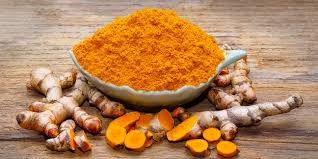
Figure 1: Turmeric Powder
Ginger: Gingerol, a bioactive compound found in fresh ginger root, is frequently utilized in herbal analgesic gels for its analgesic properties. When incorporated into gels or balms, gingerol contributes to the soothing and pain-relieving effects of the product.
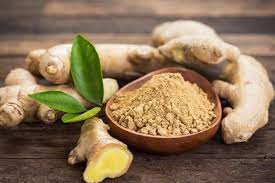
Figure.2: Ginger root
Menthol: Menthol induces a cooling sensation and aids in relieving pain and discomfort by numbing the skin and decreasing inflammation.
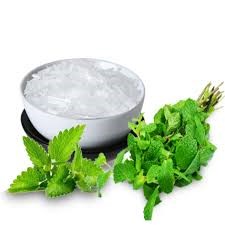
Figure 3: Menthol
Essential Oils: Essential oils like eucalyptus, peppermint, and camphor are frequently included in herbal analgesic gels due to their pain-relieving and calming characteristics. They aid in alleviating muscle discomfort and promoting a sense of relaxation.
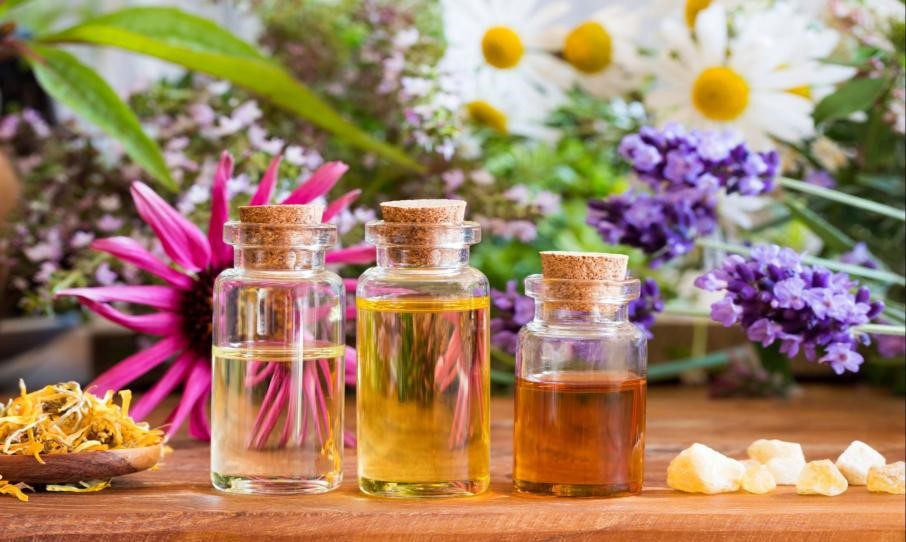
Figure 4: Essential Oils
AIM AND OBJECTIVES
Aim: Development and Evaluation of Herbal Analgesic Gel
Objective: Conduct a comprehensive literature review to identify herbs and natural compounds with known analgesic properties.
Assess the in vitro anti-inflammatory and analgesic activities of the developed gel formulations using established assays.
Conduct skin irritation and sensitization tests to ensure the safety and compatibility of the herbal analgesic gel with human skin.
Conduct sensory evaluations and user acceptability studies to assess the sensory attributes, user experience, and preference of the herbal analgesic gel formulations.
Formulate a final optimized herbal analgesic gel formulation based on the findings from the evaluations and tests conducted.
MATERIALS AND METHOD:
The ingredients that are used in my formulation:
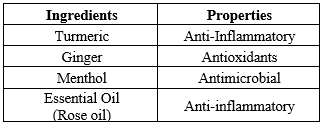
Table 1: Ingredients and their Properties
The herbal analgesic gel was prepared as following:

Table 2: Formulation Table of herbal analgesic gel
Preparation of Herbal Analgesic gel:
The process of creating an herbal analgesic gel entails blending a selection of ingredients to produce a reliable and potent formula. Here's a paraphrased version of the preparation method:
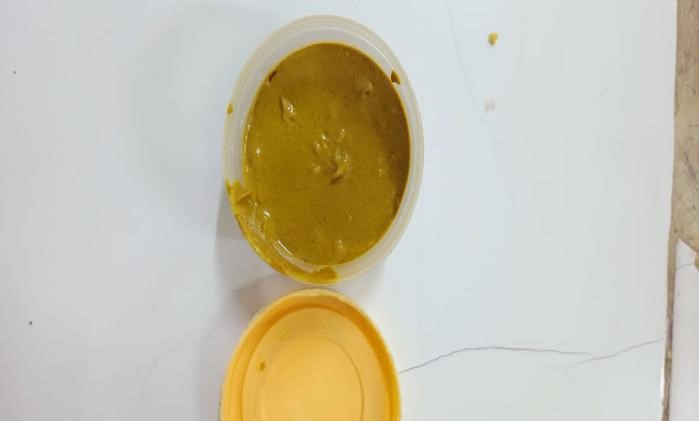
Figure. 5: Herbal Analgesic gel
METHOD:
Preparation of herbal Extracts:
Begin by selecting high-quality herbal extracts, essential oils, carrier oils, and other active ingredients known for their analgesic and anti-inflammatory properties.
Measure and combine the desired quantities of aloe vera gel, herbal extracts, and carrier oils in a clean and sterile mixing container. Ensure that the ingredients are properly measured to maintain the desired concentration and potency of the gel[20].
Add essential oils, such as lavender, rosemary, and ginger oil, to the mixture. These oils contribute to the analgesic and soothing properties of the gel.
Incorporate thickening agents, such as xanthan gum or carbomer, into the mixture to achieve the desired consistency and texture of the gel. Stir the mixture thoroughly to ensure even distribution of the thickening agents [21].
If necessary, add preservatives like grapefruit seed extract to prevent microbial contamination and extend the shelf life of the gel. Antioxidants like vitamin E oil can also be added to protect the formulation from oxidation [22].
Finally, incorporate emollients and humectants like glycerin and shea butter to moisturize and soften the skin, enhancing the overall effectiveness of the gel.
Once all the ingredients are thoroughly mixed, transfer the gel into clean and sterilized containers, ensuring proper labeling and packaging. Conduct stability and efficacy tests on the final product to ensure its safety, stability, and effectiveness. This may include tests for pH, viscosity, microbial contamination, and skin irritation.
Store the herbal analgesic gel in a cool, dry place away from direct sunlight to maintain its stability and potency. Provide usage instructions and precautions for consumers to ensure safe and effective application [23].
EVALUATION OF HERBAL ANALGESIC GEL:
Irritancy test: A small area of skin was chosen and the lotion was applied on it . After 24 to 28 hours, the test area of skin was then examined for any signs of irritation.
Obsevation: No skin irritation were observed by any of the formulations F1, F2 and F3.
Result: Not any sign of irritation were seen by any of the formulation F1, F2 and F3.
Spreadability Test: The spreadability test for a gel is like a check to see how easily and evenly the gel can be spread on your skin. Approx. 1gm of the gel was weighed and spread on a glass plate using spatula. The glass plate was then kept for dry. A sandwich was created using another glass plate. After one minute, the diameter of the spread lotion was measured using ruler or calipers. Now, the spreadability was calculated using the following formula:
Spreadability=Diameter of spread in mm×100/Time taken in seconds × Weight of lotion in grams.
Observation: The spreadability of formulation F1, F2 and F3 was acceptable. The formulation F3 was found to be most appropriate in terms of spreadability.
Result: The spreadability of the formulation F1gel was found to be of approx. 6.4 g.cm/s while that of F2 was about 6.8 and for formulation F3, it was 7.2g.cm/s
Stability testing: The developed gel was tested for its stability for Physical appearance, Texture, Colour, Odour, pH value and Degradation. The results are described in the table below:
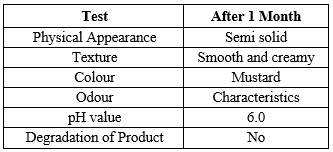
Table 3: Stability Testing
Physical Properties: The development and evaluation of herbal analgesic gel involve assessing various physical properties to ensure the product's quality, stability, and user-friendliness. Here are some key physical properties that are typically evaluated.
Viscosity test: The viscosity of the prepared gel was measured using Brookfield Viscometer. The prepared gel was placed in a clean and dry container. The gel was then thoroughly mixed to ensure its uniform consistency. Appropriate spindle was attached to the viscometer and then the gel sample was poured into the sample container. Viscometer was started and recordings were noted.
Observation: The formulation F1and F2 were less viscous as compared to that of formulation F3.
Result: The viscosity of the formulation F1 was near 35000cP and that of F2 was about 38000cP and that of formulation F3 was about 57800cP.
Phase separation test: The phase separation test for herbal analgesic gel assesses its stability by checking for ingredient separation into distinct phases. Samples are exposed to different temperatures and storage conditions to encourage phase separation. At set intervals, the gel is visually inspected for signs of separation, like oil droplets or water pooling. Samples might also undergo centrifugation to speed up phase separation and make it easier to observe. A stable gel will show uniformity and resistance to separation, ensuring consistent quality and effectiveness. This test ensures that the herbal analgesic gel stays homogeneous and effective throughout its shelf life.

Table 5: Observation of phase separation
Determination of pH: The determination of pH is an essential aspect of the development and evaluation of herbal analgesic gel formulations. pH measurement helps ensure that the gel maintains an appropriate acidity or alkalinity level, which is crucial for skin compatibility and stability. The pH of the formulation F1 was 6.5 ,F2 was 6.7 and that of formulation F3 was 6.9.
RESULT
Three different formulations of an herbal analgesic gel were formulated, each with varying ratios of excipients to achieve optimal outcomes. These formulations were subjected to comprehensive evaluation based on specified parameters detailed in a table. Following this evaluation, the effectiveness of the gel in providing pain relief was evaluated.
Formulation F1 presents as a semi-solid with a mustard hue and emits a herbal scent. Following stability testing, it has proven its resilience even after four weeks. With a pH of 6.5, it leans slightly towards acidity. Moreover, F1 has passed irritancy tests, demonstrating its non-irritating nature. Its spreadability is satisfactory, facilitating effortless application. Crucially, there are no indications of phase separation, affirming uniformity in its makeup.
Formulation F1, Formulation F2 exhibits a mustard hue and a semi-solid consistency, accompanied by a herbal fragrance. It also maintains stability even after enduring four weeks of testing, underscoring its durable formulation. With a pH slightly elevated at 6.7 compared to F1, it leans marginally towards alkalinity. Similar to F1, F2 passes irritancy tests without eliciting any irritation. Its spreadability is judged to be satisfactory, ensuring convenient application. Furthermore, akin to F1, F2 displays no signs of phase separation, confirming uniformity in its composition.
In summary, all three formulations (F1, F2, F3) share similar physical properties and perform well in terms of stability, irritancy, spreadability, and phase separation. However, F3 stands out for having the highest pH among the formulations, which may be a consideration depending on specific requirements or preferences.


 Kasif Eqbal Quidwai *
Kasif Eqbal Quidwai *










 10.5281/zenodo.12509427
10.5281/zenodo.12509427